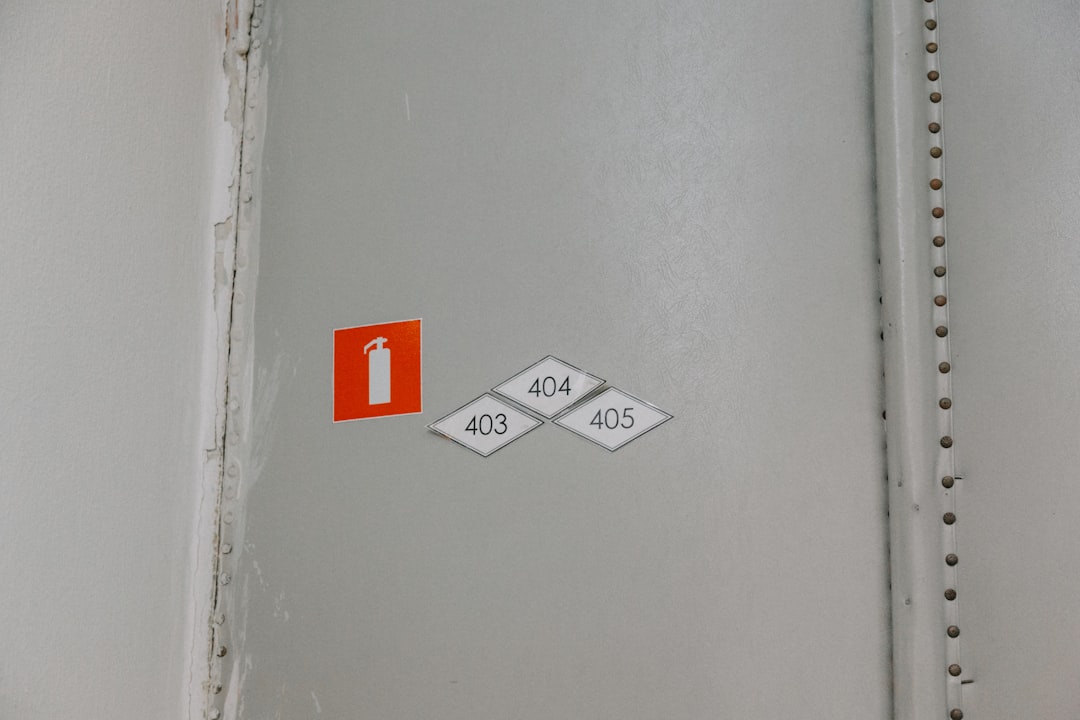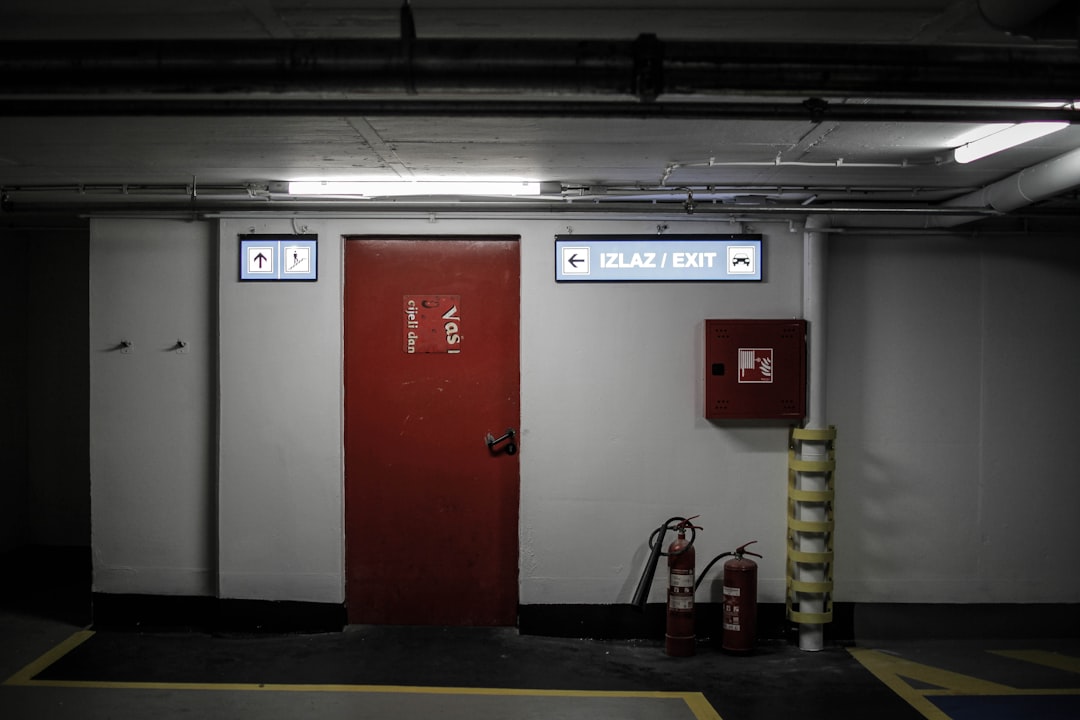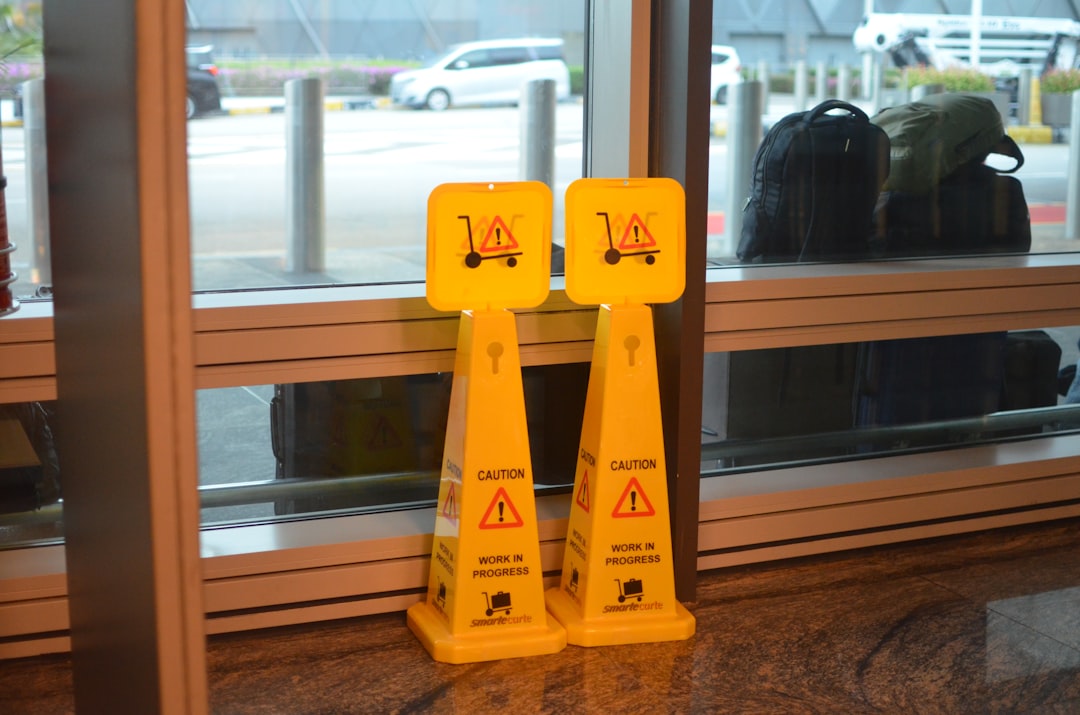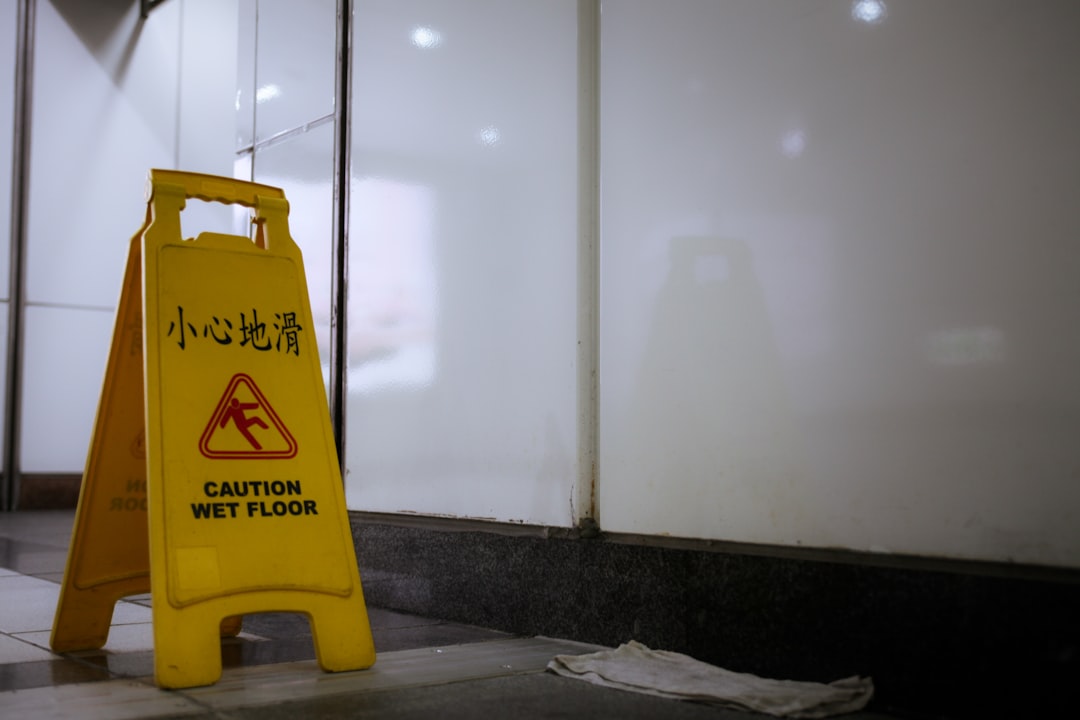

Engage prospects with a scan and streamline customer engagement with FREE QR code marketing tools by Sona – no strings attached!
Create a Free QR CodeFree consultation

No commitment

Engage prospects with a scan and streamline customer engagement with FREE QR code marketing tools by Sona – no strings attached!
Create a Free QR CodeFree consultation

No commitment
In today’s digitally driven world, QR codes have evolved from a novelty into a cornerstone of marketing innovation, especially for chute cleaning services. As this essential industry modernizes, business leaders face the challenge of building trust, ensuring compliance, and streamlining customer engagement across residential and commercial markets. Frustrations include missed high-value leads, anonymous website visitors, and the risk of customer churn due to insufficient engagement signals.
QR codes make it easier than ever for chute cleaning service providers to connect offline experiences, such as signage or work orders, with digital destinations like booking forms and instructional videos. Quick review prompts like Google reviews QR also help. The risk of losing lead opportunities, especially when prospects engage but remain anonymous, can be lessened by creating convenient, app-free channels to capture intent at every physical touchpoint. QR solutions provide immediacy, convenience, and measurable data, offering greater visibility into who interacts, when, and why.
This article outlines powerful ways for chute cleaning service businesses to deploy QR codes to drive repeat business, simplify compliance tracking, and improve client satisfaction. By linking physical assets to dynamic digital workflows, providers gain account-level insight and real-time engagement signals that build a resilient, high-growth operation through the Sona QR overview.

QR codes act as a digital bridge that turns physical touchpoints such as elevator signage, maintenance notices, or service stickers into effective channels for lead generation and customer engagement in chute cleaning services. When used strategically, they replace slow, analog processes like paper inspection logs, phone-only scheduling, and static brochures with a scan-to-action journey that works for tenants, facility teams, and property managers alike.
Classic bottlenecks in chute cleaning, such as paper compliance forms or lost work orders, can be converted into measurable moments of intent. A single scan can open a booking form, pull up a service certificate, or prompt an on-the-spot review. With dynamic codes, you print once and update destinations as services, offers, or regulations evolve. This keeps every touchpoint current without reprinting.
Modern QR management tools like Sona QR automate code creation, monitor engagement across placements, and pipe data directly into tools such as HubSpot or Salesforce. This eliminates manual reconciliation, supports retargeting, and ensures timely outreach based on scan behavior rather than guesswork.

Modern chute cleaning services face operational blind spots such as anonymous interest, cumbersome compliance workflows, and missed upsell triggers. QR codes address these pain points with a fast, app-free path to key actions that clients and tenants care about most.
When your print materials, elevator notices, or service stickers prompt an immediate scan, the hurdles of typing URLs, saving business cards, or calling during business hours disappear. That convenience leads to higher engagement, more complete records, and greater visibility into what is working across properties, neighborhoods, and building segments.
Together, these capabilities move chute cleaning teams away from reactive, paper-based processes and toward a predictable, scalable system where every touchpoint can be measured, optimized, and improved.

QR codes can be customized to support the most common workflows in chute cleaning. Selecting the right format for each use case ensures a clear, focused experience that is easy to navigate and track.
While a simple web link fits most scenarios, specialized formats like vCards or pre-filled emails can significantly reduce friction at critical moments. For example, a vCard on maintenance stickers makes it effortless for managers to share contact info, while a pre-filled email on a crew ID badge speeds up incident reporting.
Modern platforms like Sona QR make it easy to generate, label, and manage a library of code types. You can group codes by property, campaign, or placement and then analyze performance across all formats from a single dashboard.

Strategic placement determines whether QR codes are a curiosity or a conversion engine. The best locations are where questions arise and decisions get made, particularly around scheduling, verification, and reporting. In chute cleaning, high-intent moments often occur in mechanical spaces, common areas, and at the point of service.
Think about the physical journey of your stakeholders. Property managers move from the office to the compactor room, tenants travel elevators and hallways, and crew members complete service logs on-site. Matching QR placements to those moments surfaces engagement signals that traditional brochures or business cards cannot capture.
When QR placements align with friction points in your workflow, they act like pressure valves that capture interest and intent. Over time, your analytics will reveal which buildings, placements, and messages consistently drive the highest-value actions.
Chute cleaning teams can map QR codes to specific bottlenecks from prospecting through renewal. Each use case should have a clear purpose, a defined audience, and a measurable outcome that informs your next action.
By pairing the right destination with the right context, you transform static materials into living entry points to your customer journey. Below are some proven scenarios to consider.
Mapping these use cases to known bottlenecks ensures that every interaction is actionable, attributable, and valuable to your audience. Over time, you can expand to additional scenarios such as crew check-in, safety incident reporting, or upsell prompts for bundle services.
Anonymous engagement is a persistent challenge in chute cleaning. Prospects notice your trucks, see your flyers, and read your lobby notices, yet they remain invisible to your CRM. Modern QR campaigns solve this by turning each scan into a data signal you can use for segmentation, retargeting playbook, and timely follow-up.
The key is to deploy multiple codes across different stages of the buyer journey, then label and route those scans into appropriate marketing and sales actions. With a standardized naming convention and CRM integration, you will know which scans represent net-new prospects, active customers, or potential renewals.
By standardizing this process, chute cleaning teams convert non-identifying engagement into high-fit accounts. You will see clearer patterns of interest, more efficient nurture programs, and better alignment between marketing and field operations.
Disconnected campaigns lead to mixed messages and wasted ad spend. QR codes connect your offline presence with digital destinations, which unlocks real-time engagement and actionable data across every channel. For chute cleaning, this cross-channel coherence is vital since decision-makers interact with you in lobbies, on job sites, and across email or social. For strategy, explore offline attribution.
Treat each code like a trackable door into your funnel. Whether a scan happens on an invoice, a vehicle decal, or a conference handout, you can tie it to a specific campaign and outcome, then use that knowledge to refine future investments.
With a centralized platform like Sona QR, you can manage every code, monitor performance, and sync scan data with your CRM and ad platforms. This unified approach gives chute cleaning operators a connected offline-to-online funnel that informs real decisions about budget, messaging, and placement.
A structured plan turns QR codes from a nice-to-have into a revenue engine. Use the following steps to design, deploy, and scale your first campaign.
Clarify what you are trying to accomplish and why past efforts fell short. Do you want more qualified quote requests, stronger compliance documentation, or higher review volume after each visit? Pick a primary outcome and decide which audience and placement will best support it.
Select between static and dynamic codes. Static codes are fine for evergreen destinations like your homepage or a universal contact card. Dynamic codes give you editing flexibility, attribution, and performance reporting, which are essential for campaigns you plan to optimize over time.
Effective design and placement drive scans. Make the code prominent, contrast it against the background, and include a benefit-driven call to action. Use short, plain-language instructions and consider adding a scannable frame or your logo to boost credibility.
Roll out your codes in the most impactful places first. This might include mechanical room doors for verification, elevator posters for scheduling, and invoices for reviews. For prospecting, consider property manager mailers or conference handouts.
QR campaigns improve with iteration. Monitor scan volume, conversion rate, and downstream actions like booked jobs or review submissions. Identify drop-off points and test different calls to action, placement sizes, or landing page layouts to increase results.
A methodical approach minimizes guesswork and turns offline moments into a self-improving system. Over time, you will build a reliable playbook for each audience and a repeatable path from scan to revenue.
Chute cleaning often struggles to prove ROI across marketing and compliance. Without strong attribution, budgets drift to tactics that feel familiar but deliver inconsistent results. QR analytics bridge this gap, turning each scan into data you can use to understand performance and allocate resources with confidence.
A robust analytics stack connects the dots between scan, landing page engagement, form fill, and booked job. With that visibility, your team can identify high-performing placements, double down on strong messages, and cut waste from underperforming channels.
Advanced platforms do more than count scans. They help you understand how offline signals connect to purchase readiness, which speeds up sales cycles and informs operational planning, like staffing and inventory for peak seasons.
Once your first campaign is live, small refinements can compound into big gains. Focus on clarity, placement, and follow-up automation to keep momentum high across all properties and channels.
Be prepared to educate stakeholders. Tenants and facility managers need to know what they get when they scan, and crews should understand how to encourage the right behavior without adding friction in the field.
These practices replace manual, error-prone approaches with repeatable, data-driven processes. Over time, they deliver higher scan rates, cleaner attribution, and stronger revenue outcomes.
Chute cleaning operators want certainty about what works. While every market is different, there are consistent patterns that emerge when teams instrument their workflows with QR codes and track outcomes over time.
Benchmarks can guide planning and set reasonable expectations. For example, high-rise residential buildings often require chute cleaning on a three to six month cadence, and procurement decisions typically value compliance proof, verified service history, and responsiveness. QR-enabled documentation and feedback loops directly reinforce those priorities.
Use these insights to inform your roadmap. The combination of transparent documentation, real-time feedback, and frictionless booking becomes a competitive differentiator in markets where price and availability might otherwise dominate. For practical review tactics, see how teams ask for reviews using QR codes.
Every building and portfolio is unique, so creativity pays off. Mix and match QR placements and destinations to meet local needs, then use analytics to scale the winners.
The most effective deployments make scanning feel natural, helpful, and secure. Use clear CTAs, make codes accessible at eye level, and ensure landing pages are optimized for quick, decisive action.
These examples show how QR implementation tackles long-standing pain points. Start with a few use cases, then expand to additional touchpoints as you learn where intent and engagement are strongest.
QR codes offer more than convenience for chute cleaning services. They solve issues of missed leads, fragmented data, and inconsistent experiences by converting every physical surface into a digital entry point. When codes route to focused, mobile-first destinations and are tied to CRM workflows, providers can offer app-free access to quotes, compliance materials, and feedback in seconds.
The result is a more transparent and responsive customer experience. Engagement and intent signals surface in real time, which reveals upsell and retention opportunities that used to remain hidden. With unified analytics and attribution, teams can understand which messages, placements, and offers influence the bottom line and then reinvest with confidence.
If you are ready to move from paper-based workflows to a data-centric operation, start with one or two high-intent placements, define clear goals, and track relentlessly. Platforms like Sona QR help you generate codes, manage destinations, capture scan data, and sync with your CRM. With Sona, you can extend this further by connecting scans to revenue through identity resolution and multi-touch attribution. Start creating QR codes for free.
QR codes have revolutionized chute cleaning services by transforming routine maintenance into a seamless, data-driven operation. They enable service providers to streamline access, enhance communication, and track cleaning schedules with precision—ultimately improving operational efficiency and customer satisfaction. Imagine instantly verifying service completion and updating records on the spot, reducing delays and boosting client trust.
With Sona QR, you can create dynamic, trackable QR codes tailored specifically for chute cleaning workflows. Update access permissions instantly without reprinting, monitor scan activity in real time, and link each interaction directly to service outcomes. This technology empowers your team to deliver faster, more reliable service while providing clients with transparent, verifiable proof of work.
Start for free with Sona QR today and transform every scan into a powerful tool for efficiency, accountability, and growth in your chute cleaning services.
You can use QR codes to connect physical touchpoints like signage, work orders, and service stickers to digital destinations such as booking forms, service certificates, and review pages, enabling faster lead capture, compliance verification, and customer engagement.
QR codes provide immediacy and convenience, reduce paperwork errors, improve compliance tracking, increase customer engagement and reviews, enable data-driven insights, and help unify offline and online marketing efforts for better lead generation and retention.
You can create QR codes using platforms like Sona QR, which allow you to generate, label, and manage static or dynamic codes tailored to specific use cases such as booking forms, service verification, or review requests, and update destinations without reprinting.
Effective strategies include placing QR codes in high-intent locations like mechanical rooms, elevator notices, invoices, and direct mail, using dynamic codes for seasonal offers or compliance updates, integrating QR data with your CRM for retargeting, and combining QR usage across print, social, email, and events.
By embedding QR codes in tenant areas such as elevators and lobbies to prompt quick, pre-filled feedback surveys and review requests, chute cleaning services can turn passive users into advocates, accelerate reputation growth, and capture real-time signals about service quality.
Use Sona QR's trackable codes to improve customer acquisition and engagement today.
Create Your FREE Trackable QR Code in SecondsJoin results-focused teams combining Sona Platform automation with advanced Google Ads strategies to scale lead generation

Connect your existing CRM

Free Account Enrichment

No setup fees
No commitment required

Free consultation

Get a custom Google Ads roadmap for your business






Launch campaigns that generate qualified leads in 30 days or less.
